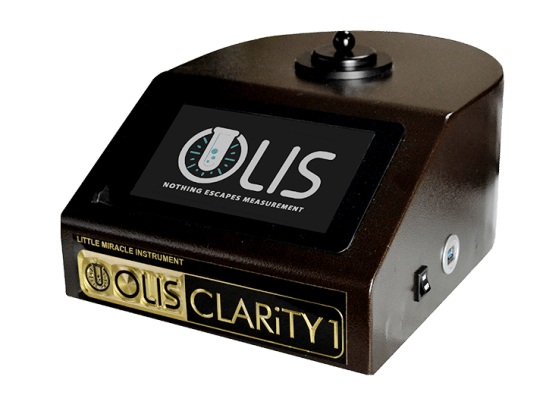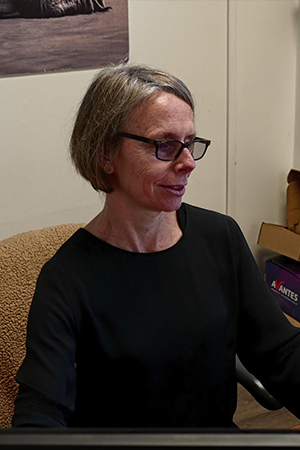The Single Strategy To Use For Uv/vis/nir
The Single Strategy To Use For Uv/vis/nir
Blog Article
See This Report on Spectrophotometers
Table of Contents4 Simple Techniques For Circularly Polarized LuminescenceSpectrophotometers - TruthsSome Ideas on Uv/vis/nir You Should KnowGetting My Spectrophotometers To WorkThe Only Guide for Uv/visThe 9-Second Trick For Circularly Polarized LuminescenceSee This Report about Uv/vis/nirThe 5-Second Trick For Uv/visGetting The Spectrophotometers To WorkThe Facts About Uv/vis RevealedThe 15-Second Trick For Uv/vis/nir10 Easy Facts About Circularly Polarized Luminescence ShownThe Definitive Guide to Uv/vis/nir
It is then scanned through the sample and the reference options. Portions of the occurrence wavelengths are sent through, or reflected from, the sample and the referral. Electronic circuits transform the relative currents into linear transmission percentages and/or absorbance/concentration worths.The transmission of a reference substance is set as a standard (datum) worth, so the transmission of all other compounds are tape-recorded relative to the preliminary "zeroed" substance. The spectrophotometer then converts the transmission ratio into 'absorbency', the concentration of specific components of the test sample relative to the preliminary substance.
Given that samples in these applications are not easily available in big amounts, they are specifically matched to being examined in this non-destructive technique. In addition, valuable sample can be conserved by making use of a micro-volume platform where as little as 1u, L of sample is needed for total analyses. A quick explanation of the procedure of spectrophotometry consists of comparing the absorbency of a blank sample that does not include a colored compound to a sample that contains a colored substance.
Circular Dichroism for Beginners
In biochemical experiments, a chemical and/or physical home is chosen and the procedure that is used is particular to that property in order to obtain more details about the sample, such as the quantity, purity, enzyme activity, and so on. Spectrophotometry can be used for a variety of methods such as figuring out optimum wavelength absorbance of samples, determining ideal p, H for absorbance of samples, identifying concentrations of unknown samples, and identifying the p, Ka of various samples.: 21119 Spectrophotometry is also a practical process for protein filtration and can also be utilized as a technique to create optical assays of a compound.
It is possible to understand the concentrations of a 2 part mixture utilizing the absorption spectra of the basic options of each part. To do this, it is required to understand the extinction coefficient of this mix at 2 wave lengths and the extinction coefficients of solutions that include the known weights of the 2 components.

Uv/vis - Questions
The majority of spectrophotometers are utilized in the UV and visible regions of the spectrum, and a few of these instruments likewise operate into the near-infrared region too. The concentration of a protein can be estimated by measuring the OD at 280 nm due to the existence of tryptophan, tyrosine and phenylalanine (https://us.enrollbusiness.com/BusinessProfile/6552779/Olis%20Clarity).
This technique needs a spectrophotometer capable of determining in the UV area with quartz cuvettes.: 135 Ultraviolet-visible (UV-vis) spectroscopy involves energy levels that thrill electronic shifts. Absorption of UV-vis light thrills particles that are in ground-states to their excited-states.
These curves can be utilized to check a new batch of colorant to check if it makes a match to requirements, e
Traditional visible region noticeable can not detect if discover colorant or the base material has product. This can make it challenging to manage color issues if for example one or more of the printing inks is fluorescent. There are 2 major setups for visual spectrum spectrophotometers, d/8 (spherical) and 0/45.
Scientists use this instrument to determine the amount of substances in a sample. If the compound is more concentrated more light will be taken in by the sample; within small varieties, the Beer, Lambert law holds and the absorbance between samples differ with concentration linearly. When it comes to printing measurements two alternative settings are frequently used- without/with uv filter to manage better the result of uv brighteners within the paper stock.
The 25-Second Trick For Circularly Polarized Luminescence
Some applications need little volume measurements which can be carried out with micro-volume platforms. As described in the applications area, spectrophotometry can be utilized in both qualitative and quantitative analysis of DNA, RNA, and proteins. Qualitative analysis can be utilized and spectrophotometers are used to tape-record spectra of substances by scanning broad wavelength areas to determine the absorbance homes (the intensity of the color) of the substance at each wavelength.

Facts About Circularly Polarized Luminescence Uncovered
One major aspect is the type of photosensors that are offered for different spectral regions, however infrared measurement is likewise challenging since practically whatever emits IR as thermal radiation, particularly at wavelengths beyond about 5 m. Another problem is that many materials such as glass and plastic soak up infrared, making it incompatible as an optical medium.
Samples for IR spectrophotometry might be smeared in between two discs of potassium bromide or ground with potassium bromide and pushed into a pellet. Where aqueous services are to be determined, insoluble silver chloride is utilized to build the cell. Spectroradiometers, which run nearly like the noticeable area spectrophotometers, are developed to measure the spectral density of illuminants. Recovered Dec 23, 2018. Basic Lab Approaches for Biochemistry and Biotechnology (Second ed.). The essential guide to analytical chemistry.
Chichester, NY: Wiley. pp. 1617. ISBN 9780471974123. OCLC 36543293. Ninfa AJ, Ballou DP (2004 ). Essential lab approaches for biochemistry and biotechnology. Hoboken: Wiley. p. 66. ISBN useful source 9781891786006. OCLC 633862582. Rendina G (1976 ). Philadelphia, PA: W. B. Saunders Business. pp. 46-55. ISBN 0721675506. OCLC 147990. Oke, J. B.; Gunn, J. E.
Uv/vis Fundamentals Explained
"Secondary basic stars for absolute spectrophotometry". The Astrophysical Journal. 266: 713. Bibcode:1983 Ap, J..266..713 O. doi:10. 1086/160817. Ishani, G (2006 ). "The very first commercial UV-vis spectrophotometer". p. 100. Retrieved Dec 23, 2018. Simoni, RD; Hill, RL; Vaughan, M; Tabor, H (Dec 5, 2003). "A Timeless Instrument: The Beckman DU Spectrophotometer and Its Innovator, Arnold O.
278 (49 ): e1. doi:. ISSN 1083-351X. Beckman, A. O.; Gallaway, W. S.; Kaye, W.; Ulrich, W. F. (March 1977). "History of spectrophotometry at Beckman Instruments, Inc". Analytical Chemistry. 49 (3 ): 280A300A. doi:10. 1021/ac50011a001. "Hewlett Packard: Compound Identification with HP 8450 A UV Visible Spectrophotometer". Analytical Chemistry. 51 (12 ): 1188A1189A. 1979-10-01.
Ninfa AJ, Ballou DP, Benore M (2015 ). Basic Laboratory Methods for Biochemistry and Biotechnology (3, rev. ed.). UV/Vis/NIR. Laboratory Equipment.
Uv/vis/nir Fundamentals Explained
Recovered Jul 4, 2018. Trumbo, Toni A.; Schultz, Emeric; Borland, Michael G.; Pugh, Michael Eugene (April 27, 2013). "Applied Spectrophotometry: Analysis of a Biochemical Mixture". Biochemistry and Molecular Biology Education. 41 (4 ): 24250. doi:10. 1002/bmb. 20694. PMID 23625877. (PDF). www. mt.com. Mettler-Toledo AG, Analytical. 2016. Recovered Dec 23, 2018. Cortez, C.; Szepaniuk, A.; Gomes da Silva, L.
"Checking Out Proteins Purification Methods Animations as Tools for the Biochemistry Mentor". Journal of Biochemistry Education. 8 (2 ): 12. doi:. Garrett RH, Grisham CM (2013 ). Biochemistry. Belmont, CA: Cengage. p. 106. ISBN 978-1133106296. OCLC 801650341. Vacation, Ensor Roslyn (May 27, 1936). "Spectrophotometry of proteins". Biochemical Journal. 30 (10 ): 17951803. doi:10. 1042/bj0301795.
PMID 16746224. Hermannsson, Ptur G.; Vannahme, Christoph; Smith, Cameron L. C.; Srensen, Kristian T.; Kristensen, Anders (2015 ). "Refractive index dispersion picking up using a variety of photonic crystal resonant reflectors". Applied Physics Letters. 107 (6 ): 061101. Bibcode:2015 Ap, Ph, L. 107f1101H. doi:10. 1063/1. 4928548. S2CID 62897708. Mavrodineanu R, Schultz JI, Menis O, eds.
More About Uv/vis/nir
U.S. Department of Commerce National Bureau of Standards special publication; 378. Washington, D.C.: U.S. National Bureau of Standards.
The process begins with a controlled light that illuminates the evaluated sample. In the case of reflection, as this light engages with the sample, some is soaked up or emitted. The released light journeys to the detector, which is evaluated, quantified, and provided as industry-standard color scales and indices.
Market governing bodies normally define specific metrics for specific items, such as Tomato and Coffee indices. The simplified math appears like this: Where R is the reflection coefficient. All terms are examined over the visible spectrum from 400 to 700 nm. When it comes to transmission, when the light engages with the sample, it is either soaked up, reflected, or transferred.
Fascination About Circularly Polarized Luminescence
Examples consist of APHA (American Public Health Association) for watercolor and pureness analysis, ASTM D1500 for petrochemical color analysis, edible oil indices utilized in food, and color analyses of beverages. All terms are assessed over the visible spectrum from 400 to 700 nm.
Image Credit: Matej Kastelic/ Dr. Arnold J. Beckman and his coworkers at the National Technologies Laboratories initially created the spectrophotometer in 1940. In 1935 Beckman founded the company, and the discovery of the spectrophotometer was their most ground-breaking innovation.
The Facts About Circular Dichroism Uncovered
Over time, scientists kept improving the spectrophotometer design to enhance its performance. The UV capabilities of the design B spectrophotometer were improved by changing the glass prism with a quartz prism.
After 1984, double-beam versions of the device were developed. The addition of external software with the arrangement of onscreen screens of the spectra came in the 1990s. Generally, a spectrophotometer is comprised of two instruments, namely, a spectrometer and a photometer. A standard spectrophotometer consists of a source of light, a monochromator, a collimator for straight beam transmission, a cuvette to place a sample, and a photoelectric detector.
How Uv/vis/nir can Save You Time, Stress, and Money.
There are different kinds of spectrophotometers in different sizes and shapes, each with its own purpose or functionality. A spectrophotometer identifies just how much light is shown by chemical elements. UV/Vis/NIR. It measures the distinction in light intensity based on the overall quantity of light introduced to a sample and the quantity of light beam that travels through the sample option
A spectrophotometer is used to identify the concentration of both colorless and colored solutes in a service. This instrument is utilized to figure out the rate of a reaction.
Report this page